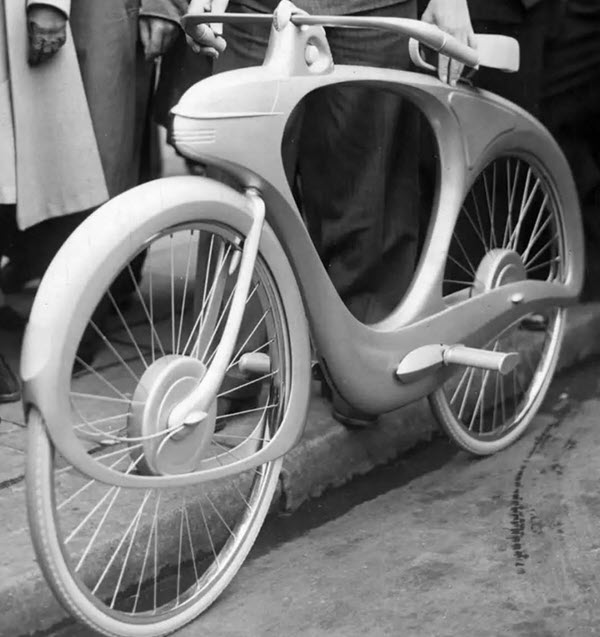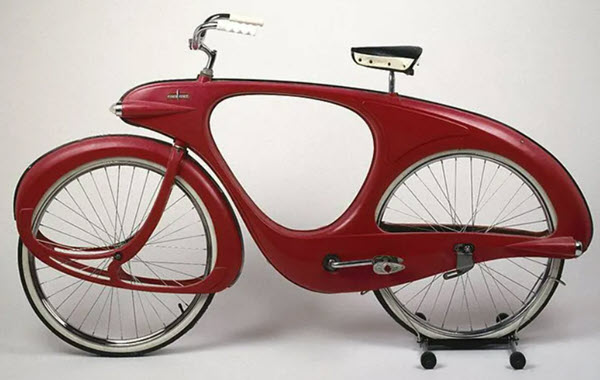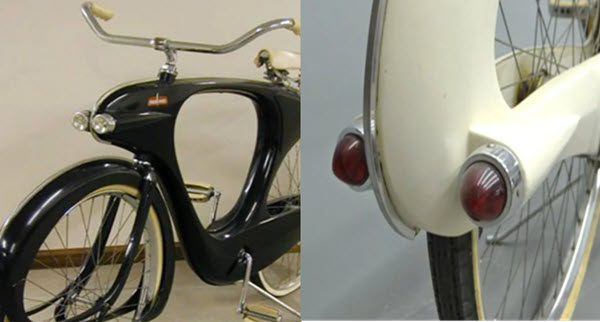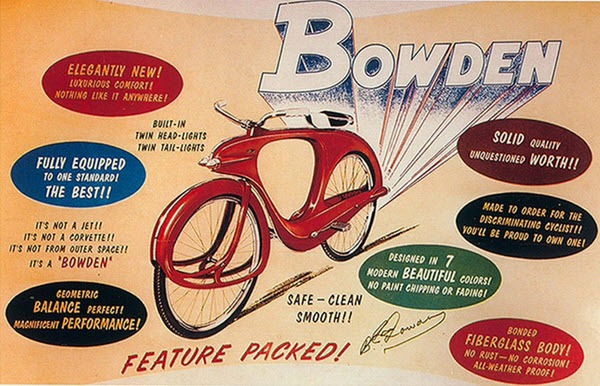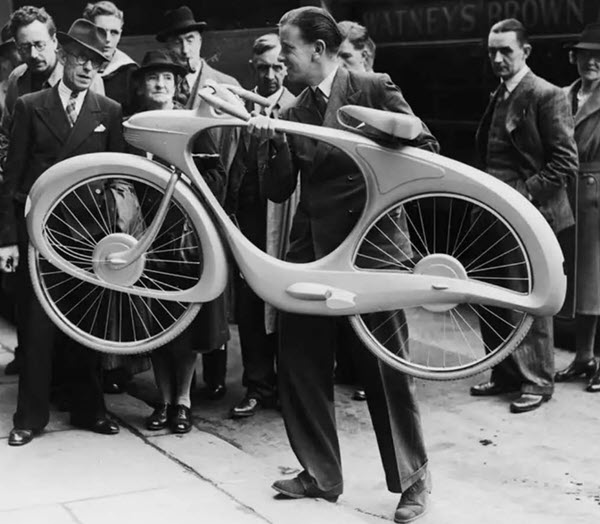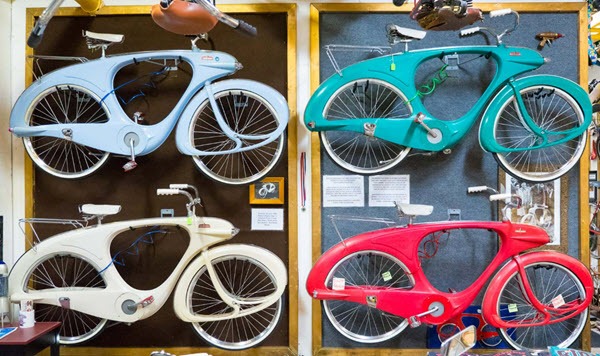Contents
SPACELANDER BICYCLE
This weeks “Bicycle of the Week is the iconic Spacelander bicycle. Initially named the Classic, it was designed by Benjamin Bowden for the 1946 exhibition Britain Can Make It. Transitioning from prewar streamlined styles, its curving lines and amoeba-like voids embraced organic forms over machine-made aesthetics.
THE SPACELANDER BICYCLE AHEAD OF IT’S TIME
Notably, it was crafted from two steel clamshell halves pressed into a monocoque frame. According to Leon Dixon and the National Bicycle History Archive Of America, the prototype incorporated a driveshaft and a hub dynamo. A head of it’s time, the bike actually stored energy for uphill climbs. In fact, it also powered lights, a horn, and a built-in radio via concealed batteries!
Despite sparking public interest, British bicycle manufacturers hesitated to invest in the necessary re-tooling. Consequently, Bowden sought support in the US, eventually relocating there. Over a decade later, in 1960, production of the Spacelander commenced in Michigan. However, the manufacturer opted for fiberglass molding instead of aluminum.
Although retaining the futuristic appearance of the Classic, Bowden made significant changes to the Spacelander. Transitioning away from the hub dynamo, he opted for a more conventional sprocket-chain assembly. Additionally, the new name, Spacelander, aimed to capitalize on the burgeoning interest in the Space Race.
BOWDEN RUSHES THE DEVELOPMENT OF THE SPACELANDER BICYCLE
Facing financial difficulties, Bowden rushed the development of the Spacelander, which hit the market in 1960 in five vibrant colors: Charcoal Black, Cliffs of Dover White, Meadow Green, Outer Space Blue, and Stop Sign Red. Despite its striking design, the bicycle carried a hefty price tag of $89.50, positioning it among the more expensive options available. Moreover, the fragile fiberglass frame and the unconventional nature of the bike posed challenges in marketing it to established distributors.
Leon Dixon notes that only 522 Spacelander bicycles were shipped before production ceased. In fact, this happened even though additional sets of parts were manufactured. Bowden ventured further, designing a third iteration named the 300, but only a few prototypes were ever created.
Interest in the Spacelander experienced a resurgence in the 1980s, particularly among collectors. John Howland and Michael Kaplan acquired the rights to the Spacelander name from Bowden. Since then, they have produced a limited number of reproductions and replacement parts, keeping the legacy of the Spacelander alive.
 |
 |
LEARN MORE HERE____________________LEARN MORE HERE
We earn from qualified Amazon purchases with NO cost to you. ANY item that you need or were going to purchased anyway through the links above, helps support this site. Thank you for your support!



